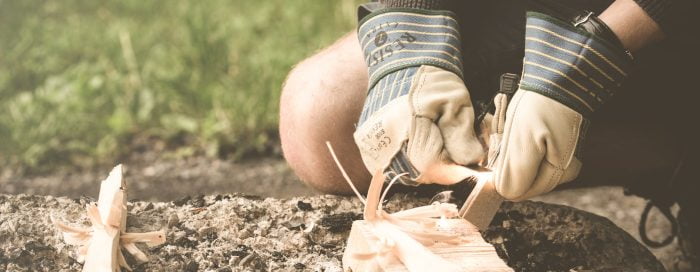Bushcraft is more than just a set of survival skills; it’s an art form that teaches you how to thrive in the natural environment using only the resources that nature provides. It’s about understanding the ecosystem, learning to observe, adapt, and ultimately become one with the wilderness. Whether you’re a seasoned outdoor enthusiast or just starting your journey into the wild, bushcraft can offer a profound and rewarding experience. Here’s a beginner’s guide to the essential skills and tools you’ll need to embark on your bushcraft adventure.

Understanding Bushcraft
Bushcraft is the practice of surviving and thriving in a natural environment using primitive skills. Unlike survivalism, which focuses on getting out of the wild, bushcraft is about comfortably living within it. It’s about building a deeper connection with nature, understanding its rhythms, and learning to utilize its resources.
Essential Bushcraft Skills
1. Fire Making
Fire is a fundamental element in bushcraft. It provides warmth, cooks food, purifies water, and can be a signal for help. Understanding different fire-making techniques is crucial.
- Friction-Based Fire Making: This method involves creating fire through friction, using tools like a bow drill or hand drill.
- Flint and Steel: Striking flint against steel produces sparks that can ignite tinder.
2. Shelter Building
A proper shelter can protect you from harsh weather conditions. Knowing how to build a shelter using natural materials is a vital skill.
- Lean-to Shelter: This simple structure can be made by leaning branches against a tree or rock.
- Snow Shelter: In winter conditions, understanding how to build a snow cave or quinzhee can be life-saving.
3. Water Purification
Finding and purifying water is essential for survival. Techniques include:
- Boiling: Boiling water for at least one minute kills most pathogens.
- Natural Filtration: Using rocks, sand, and charcoal, you can create a natural filter to remove debris.
4. Foraging and Hunting
Understanding how to find and prepare food in the wild is a key aspect of bushcraft.
- Plant Identification: Learn to identify edible plants, berries, and nuts in your region.
- Trapping and Fishing: Basic trapping and fishing skills can provide a valuable food source.
5. Navigation
Navigating without modern tools requires understanding natural landmarks and celestial navigation.
- Sun Navigation: The sun rises in the east and sets in the west, providing directional guidance.
- Star Navigation: Familiarity with constellations can help in night navigation.

Essential Bushcraft Tools
1. Knife
A good bushcraft knife is versatile and can be used for carving, cutting, and preparing food.
2. Fire Starter
Carry a reliable fire starter like a ferrocerium rod, which can produce sparks even when wet.
3. Axe or Hatchet
An axe or hatchet is useful for chopping wood and building shelters.
4. Cordage
Paracord or natural fibers can be used for tying, building, and fishing.
5. Container
A metal container can be used for boiling water and cooking.
Conclusion
Bushcraft is a journey into the heart of nature. It teaches resilience, patience, and a profound respect for the environment. As you develop these skills, you’ll find that bushcraft is not just about surviving; it’s about thriving and enjoying the wilderness in a way that few ever experience.
Remember, the most important tool in bushcraft is knowledge. Books, courses, and experienced mentors can provide valuable insights. Practice these skills safely, respect nature, and enjoy the incredible adventure that bushcraft offers.
Whether you’re planning a weekend in the woods or considering a more extended wilderness experience, these skills and tools will equip you to embrace the wild with confidence and joy. Happy bushcrafting!

